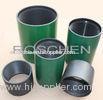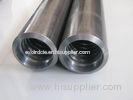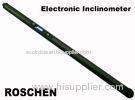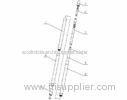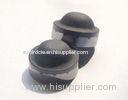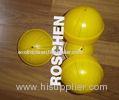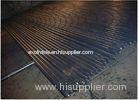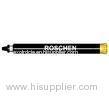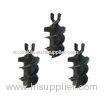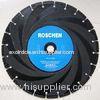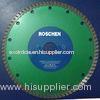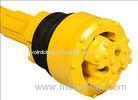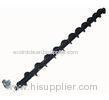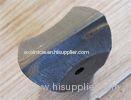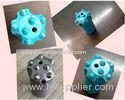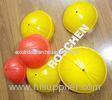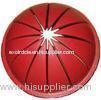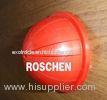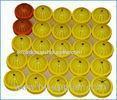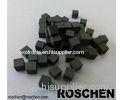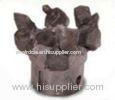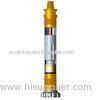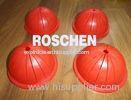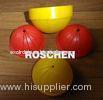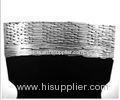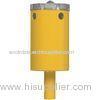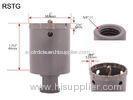|
ROSCHEN
|
Standard Penetration Test Sampler for Surveying investigation
| Place of Origin: | Zhejiang, China (Mainland) |
|
|
|
| Add to My Favorites | |
| HiSupplier Escrow |
Product Detail
Standard Penetration Test Sampler for Surveying investigation
Detailed prod
Standard Penetration Test Sampler for Surveying investigation
Detailed products:
Geotechnical investigation
Standard penetration test
Standard Penetration Test (SPT)
The standard penetration test (SPT) is an in-situ dynamic penetration test designed to provide information on the geotechnical engineering properties of soil. The test procedure is described in the British Standard BS EN ISO 22476-3, ASTM D1586 and Australian Standards AS 1289.6.3.1. A detailed description of SPT test and procedure can be found on the geotechnical data
Procedure
The test uses a thick-walled sample tube, with an outside diameter of 50 mm and an inside diameter of 35 mm, and a length of around 650 mm. This is driven into the ground at the bottom of a borehole by blows from a slide hammer with a weight of 63.5 kg (140 lb) falling through a distance of 760 mm (30 in). The sample tube is driven 150 mm into the ground and then the number of blows needed for the tube to penetrate each 150 mm (6 in) up to a depth of 450 mm (18 in) is recorded. The sum of the number of blows required for the second and third 6 in. of penetration is termed the "standard penetration resistance" or the "N-value". In cases where 50 blows are insufficient to advance it through a 150 mm (6 in) interval the penetration after 50 blows is recorded. The blow count provides an indication of the density of the ground, and it is used in many empirical geotechnical engineering formulae.
Purpose
The main purpose of the test is to provide an indication of the relative density of granular deposits, such as sands and gravels from which it is virtually impossible to obtain undisturbed samples. The great merit of the test, and the main reason for its widespread use is that it is simple and inexpensive. The soil strength parameters which can be inferred are approximate, but may give a useful guide in ground conditions where it may not be possible to obtain borehole samples of adequate quality like gravels, sands, silts, clay containing sand or gravel and weak rock. In conditions where the quality of the undisturbed sample is suspect, e.g. very silty or very sandy clays, or hard clays, it is often advantageous to alternate the sampling with standard penetration tests to check the strength. If the samples are found to be unacceptably disturbed, it may be necessary to use a different method for measuring strength like the plate test. When the test is carried out in granular soils below groundwater level, the soil may become loosened. In certain circumstances, it can be useful to continue driving the sampler beyond the distance specified, adding further drilling rods as necessary. Although this is not a standard penetration test, and should not be regarded as such, it may at least give an indication as to whether the deposit is really as loose as the standard test may indicate.
The usefulness of SPT results depends on the soil type, with fine-grained sands giving the most useful results, with coarser sands and silty sands giving reasonably useful results, and clays and gravelly soils yielding results which may be very poorly representative of the true soil conditions. Soils in arid areas, such as the Western United States, may exhibit natural cementation. This condition will often increase the standard penetration value.
The SPT is used to provide results for empirical determination of a sand layer's susceptibility to earthquake liquefaction, based on research performed by Harry Seed, T. Leslie Youd, and others.
Correlation with Soil Mechanical Properties
Despite its many flaws, it is usual practice to correlate SPT results with soil properties relevant for geotechnical engineering design. The reason being that SPT results are often the only test results available, therefore the use of direct correlations has become common practice in many countries.
Different correlations are proposed for granular and cohesive soils.
Geotechnical investigation
Geotechnical investigations are performed by geotechnical engineers or engineering geologists to obtain information on the physical properties of soil and rock around a site to design earthworks and foundations for proposed structures and for repair of distress to earthworks and structures caused by subsurface conditions. This type of investigation is called a site investigation.[1] Additionally, Geotechnical investigations are also used to measure the thermal resistivity of soils or backfill materials required for underground transmission lines, oil and gas pipelines, radioactive waste disposal, and solar thermal storage facilities. A geotechnical investigation will include surface exploration and subsurface exploration of a site. Sometimes, geophysical methods are used to obtain data about sites. Subsurface exploration usually involves soil sampling and laboratory tests of the soil samples retrieved.
Surface exploration can include geologic mapping, geophysical methods, and photogrammetry, or it can be as simple as a geotechnical professional walking around on the site to observe the physical conditions at the site.
To obtain information about the soil conditions below the surface, some form of subsurface exploration is required. Methods of observing the soils below the surface, obtaining samples, and determining physical properties of the soils and rocks include test pits, trenching (particularly for locating faults and slide planes), boring, and in situ tests.
Soil sampling
Borings come in two(2) main varieties, large-diameter and small-diameter. Large-diameter borings are rarely used due to safety concerns and expense, but are sometimes used to allow a geologist or engineer to visually and manually examine the soil and rock stratigraphy in-situ. Small-diameter borings are frequently used to allow a geologist or engineer examine soil or rock cuttings or to retrieve samples at depth using soil samplers, and to perform in-place soil tests.
Soil samples are often categorized as being either "disturbed" or "undisturbed;" however, "undisturbed" samples are not truly undisturbed. A disturbed sample is one in which the structure of the soil has been changed sufficiently that tests of structural properties of the soil will not be representative of in-situ conditions, and only properties of the soil grains (e.g., grain size distribution, Atterberg limits, and possibly the water content) can be accurately determined. An undisturbed sample is one where the condition of the soil in the sample is close enough to the conditions of the soil in-situ to allow tests of structural properties of the soil to be used to approximate the properties of the soil in-situ.
Offshore soil collection introduces many difficult variables. In shallow water, work can be done off a barge. In deeper water a ship will be required. Deepwater soil samplers are normally variants of Kullenberg-type samplers, a modification on a basic gravity corer using a piston (Lunne and Long, 2006). Seabed samplers are also available, which push the collection tube slowly into the soil.
Soil samplers
Soil samples are taken using a variety of samplers; some provide only disturbed samples, while others can provide relatively undisturbed samples.
Shovel. Samples can be obtained by digging out soil from the site. Samples taken this way are disturbed samples.
Trial Pits are relatively small hand or machine excavated tranches used to determine groundwater levels and take disturbed samples from.
Hand/Machine Driven Auger. This sampler typically consists of a short cylinder with a cutting edge attached to a rod and handle. The sampler is advanced by a combination of rotation and downward force. Samples taken this way are disturbed samples.
Continuous Flight Auger. A method of sampling using an auger as a corkscrew. The auger is screwed into the ground then lifted out. Soil is retained on the blades of the auger and kept for testing. The soil sampled this way is considered disturbed.
Split-spoon / SPT Sampler. Utilized in the 'Standard Test Method for Standard Penetration Test (SPT) and Split-Barrel Sampling of Soils' (ASTM D 1586[2]). This sampler is typically a 18"-30" long, 2.0" outside diameter (OD) hollow tube split in half lengthwise. A hardened metal drive shoe with a 1.375" opening is attached to the bottom end, and a one-way valve and drill rod adapter at the sampler head. It is driven into the ground with a 140-pound (64 kg) hammer falling 30". The blow counts (hammer strikes) required to advance the sampler a total of 18" are counted and reported. Generally u










